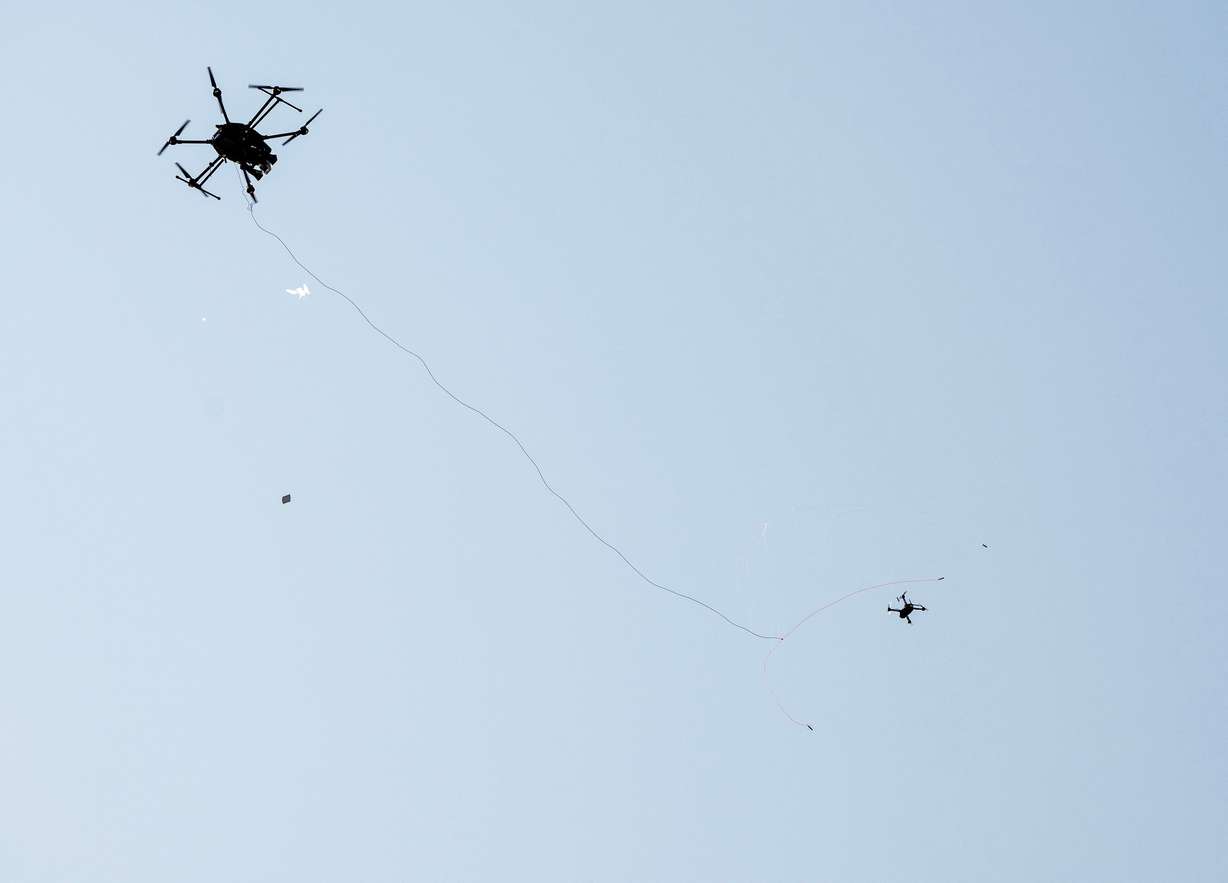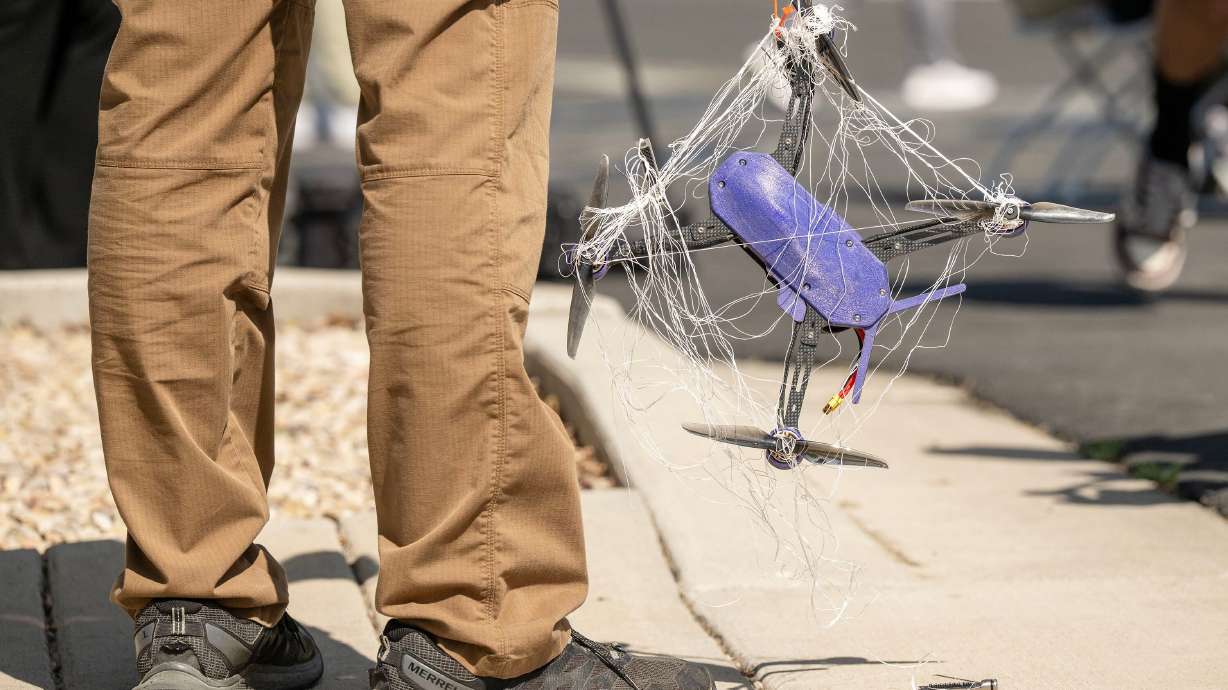- Fortem Technologies in Lindon develops advanced drones for U.S. defense.
- Its DroneHunter F700 captures enemy drones with high success and minimal damage.
- Fortem seeks to collaborate with the U.S. military and federal agencies to counter drone threats.
LINDON — In Lindon, one company is working to ensure that the United States will be prepared if or when war comes knocking on its door.
Drones are continually being viewed as the future technology of warfare, as the unmanned crafts have been used to level the playing field and surprise enemies recently in both the Russia-Ukraine war and the Israel-Iran conflict.
"The threat of dangerous drones is very real," Adam Robertson, chief technology officer at Fortem Technologies, said during the company's opening of its new headquarters and advanced manufacturing facility on Tuesday.

"Just this month, the world witnessed Ukraine using clever planning and small bomb-laden drones to infiltrate deep into Russia and destroy billions of dollars of aircraft, including long-range strategic bombers. Similarly, Israel infiltrated into Iran and used small bomb-laden drones to completely disable Iranian air defenses, giving Israel unfettered air dominance over Iran."
Fortem Technologies manufactures drones currently in use by the Department of Defense and other allied government agencies to safeguard against foreign threats entirely autonomously from the skies. Drones are considered more cost-effective than other defensive tactics and help decrease human casualties and errors.
"A similar attack in the U.S. homeland is not a question of if, but when, and how extensive it will be," Robertson added.
"Enemies to America have been using small drones to surveil critical U.S. sites for years. They know where our planes are stored, they know where our fuel is stored, they know where the power grid is exposed. They know where our defenses are located, and they even own land next to our military bases," he said.
"The threat is real, and it is here today," he said. "The most important question is: Will America be prepared to defend itself?"

War tech that wins
That's where weapons like the DroneHunter F700 come in.
Costing around $160,000 per build and with more than 4,500 captures under its belt, the massive drone has been used in warfare worldwide to capture enemy drones of all sizes, requiring no missiles and causing little to no costly collateral damage.
The DroneHunter utilizes radar technology similar to that found on fighter jets to detect enemy objects in the sky, capturing them with a Dyneema netting that is 15 times stronger than steel, and grounding them for further study.
Depending on target and circumstances, Fortem Chief Operating Officer Jim Housinger told the Deseret News that "it's well over 75%" and "on some of the more straightforward captures we're upwards of 95% probability of capture."

Using a drone that can capture enemy tech without doing damage then allows the advantage of forensic analysis.
Experts can discover fingerprints, as well as an analysis of where the drone was built and where it was manufactured, who put it in the sky and how best to take down others, Robertson explained, during a live demonstration of the DroneHunter capturing a smaller "enemy" drone.
"The world has witnessed the rapid evolution of drone technology to destroy tanks and artillery and attack personnel," he said, noting that the company's technology has already been used to capture enemy drones on foreign and U.S. soil.
"Fortem is here to protect America" and "to protect our freedom," Robertson added, and "is working closely with all branches of the U.S. military, Homeland Security and other federal agencies to ensure we have the technology to defeat the drone threat."











